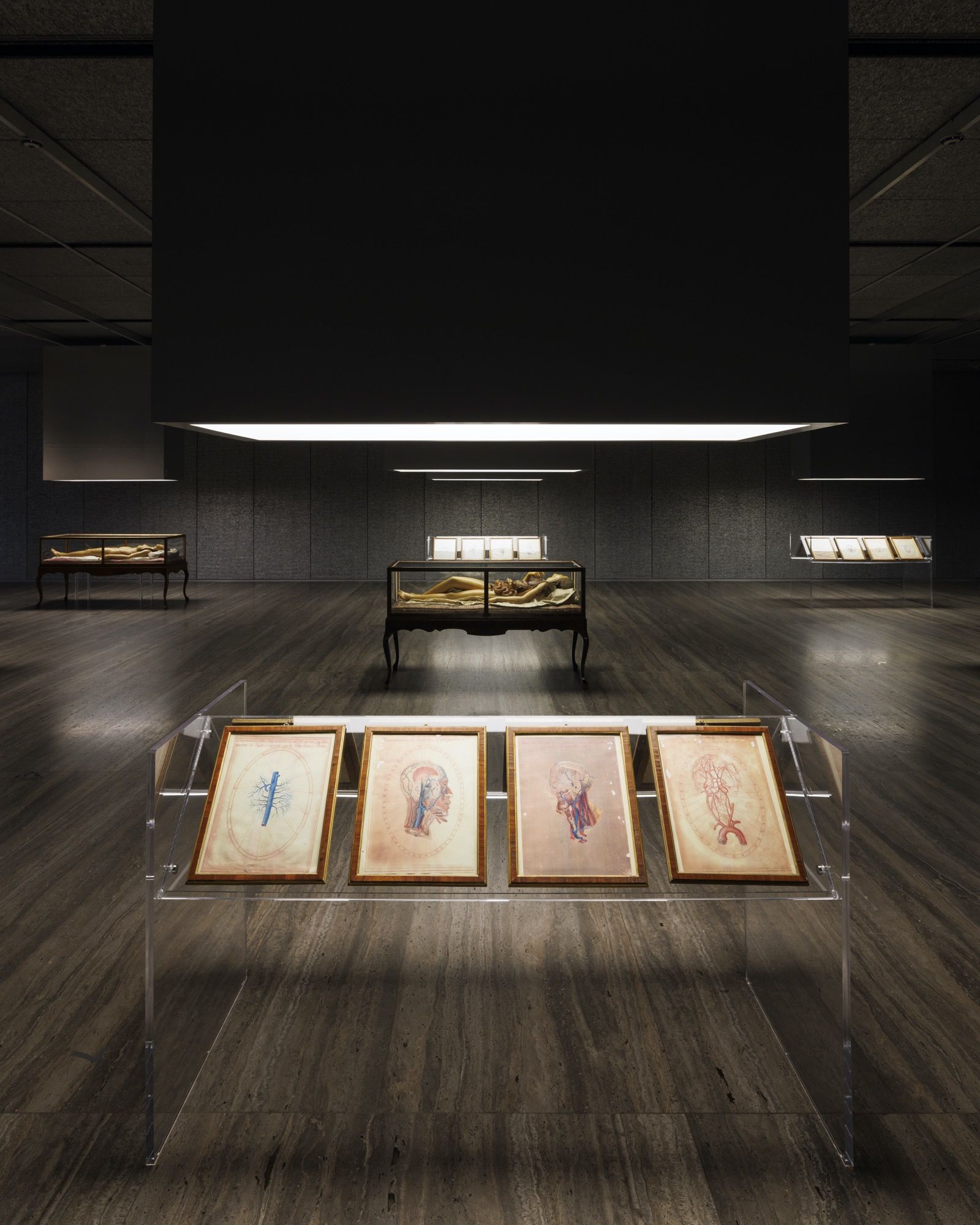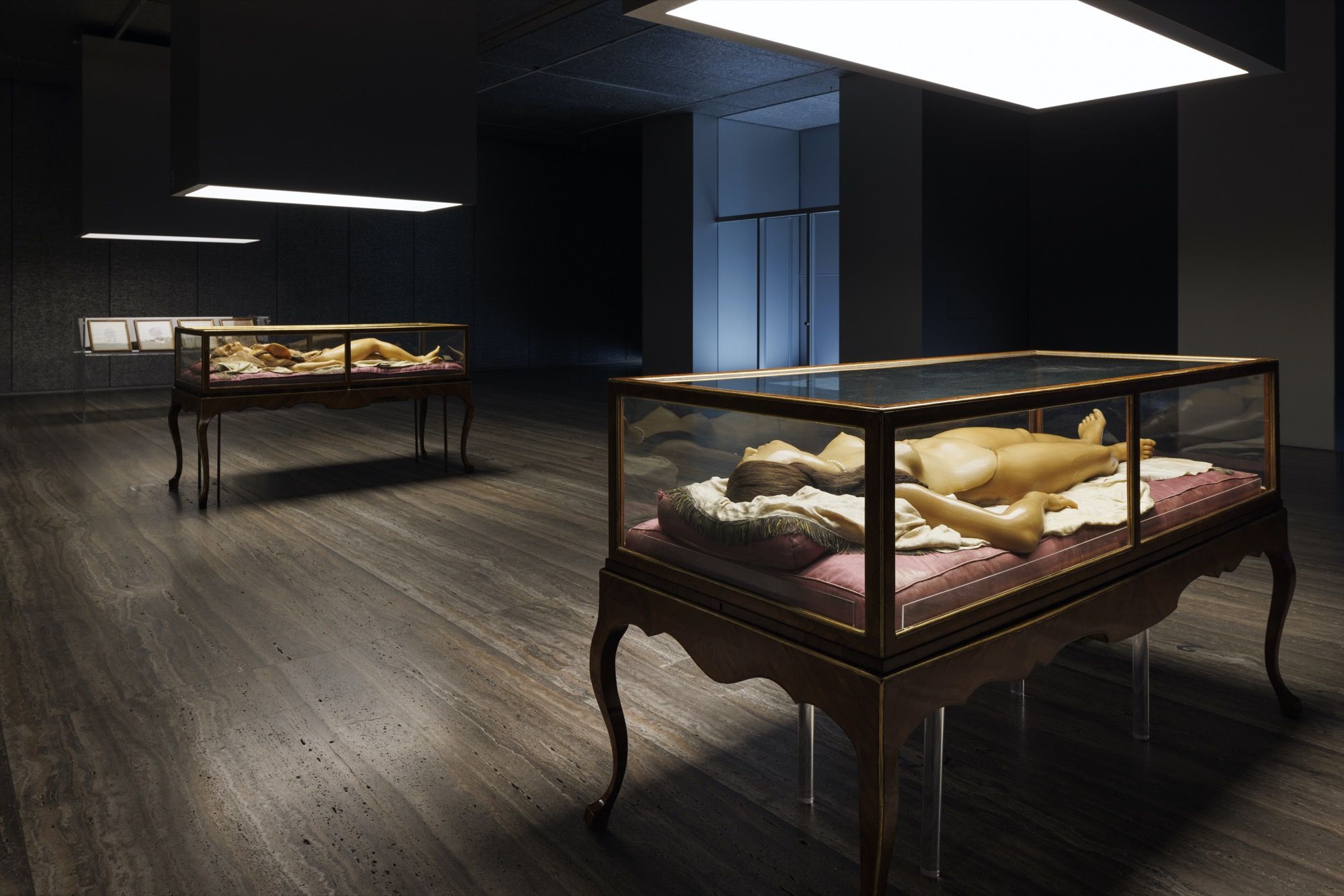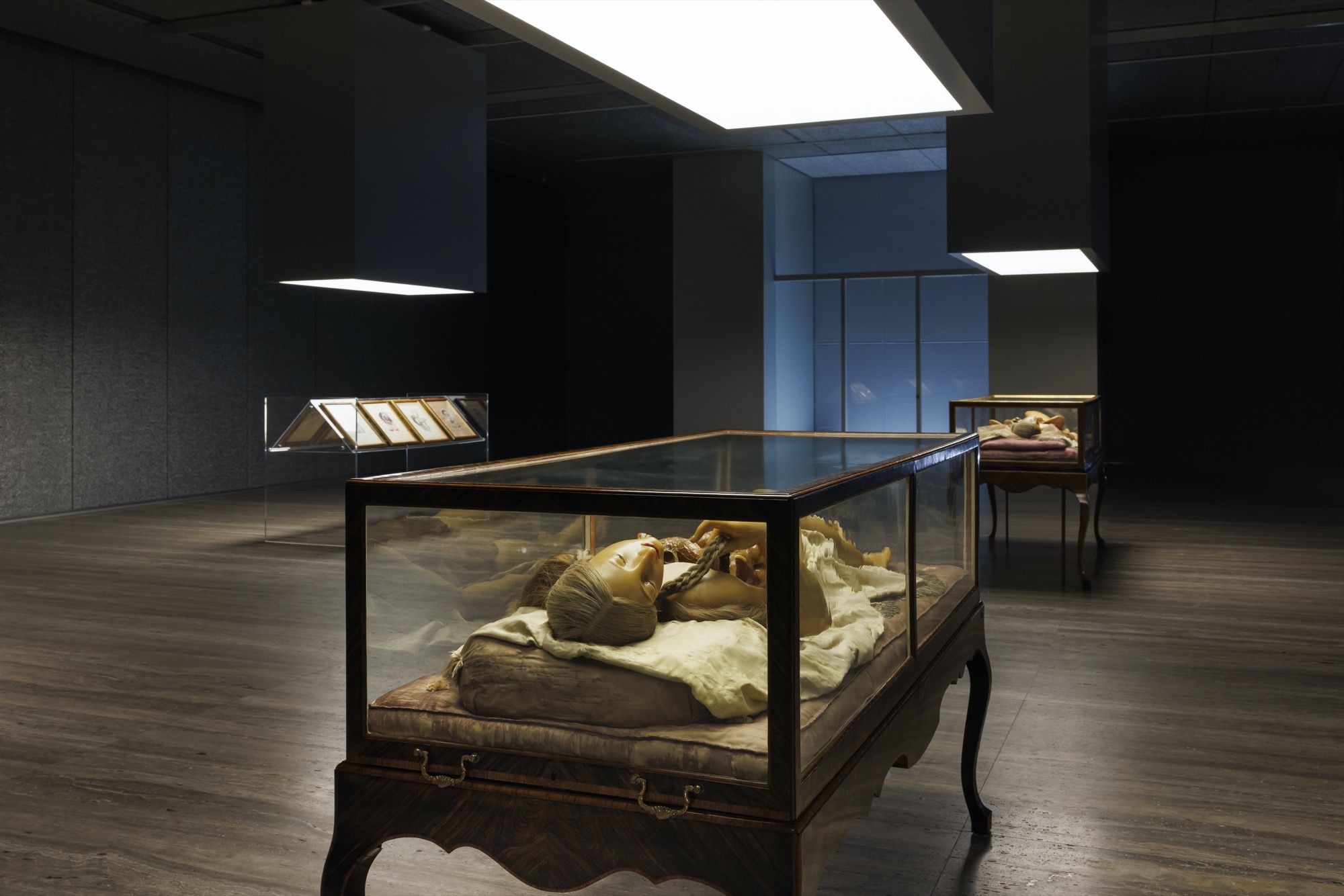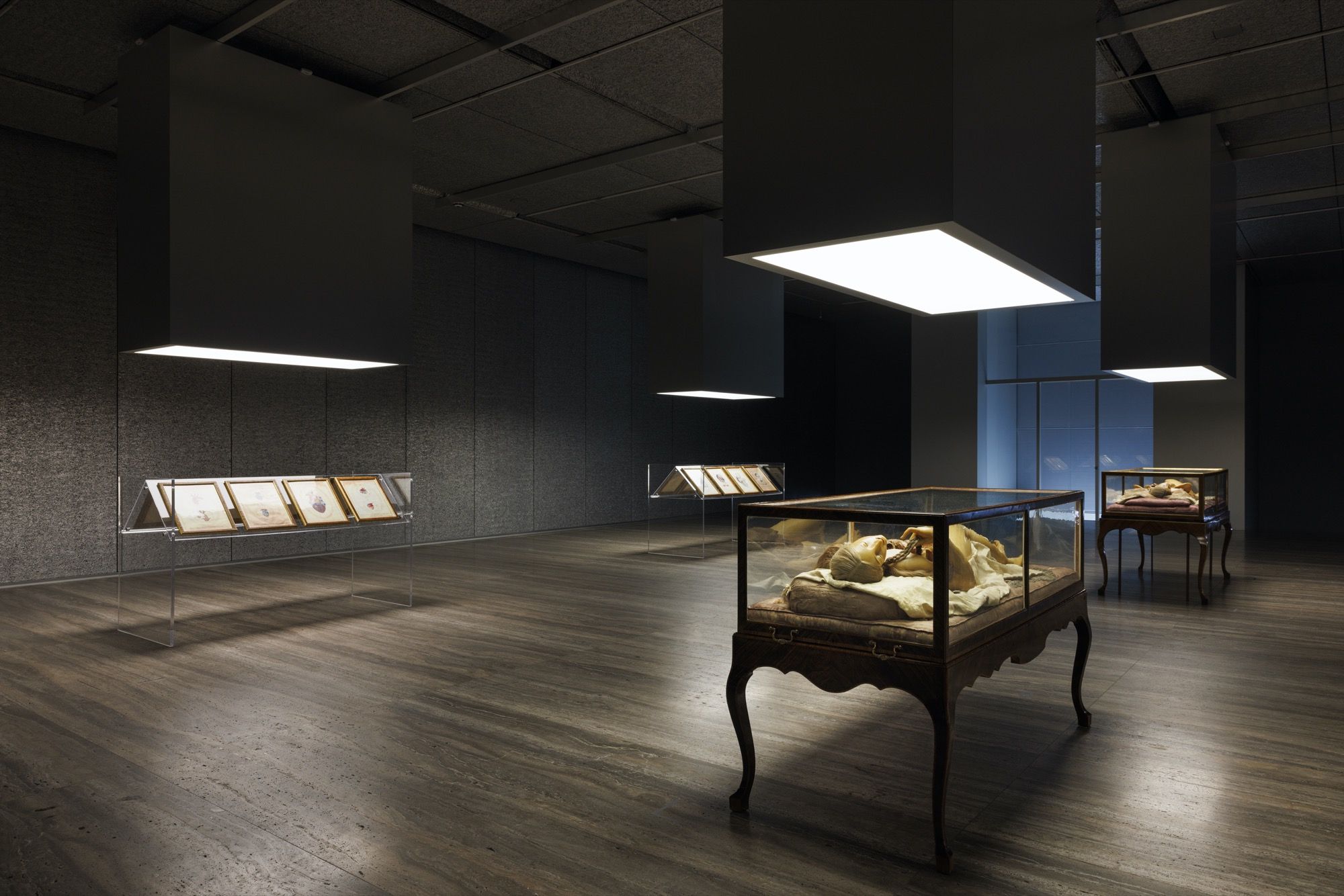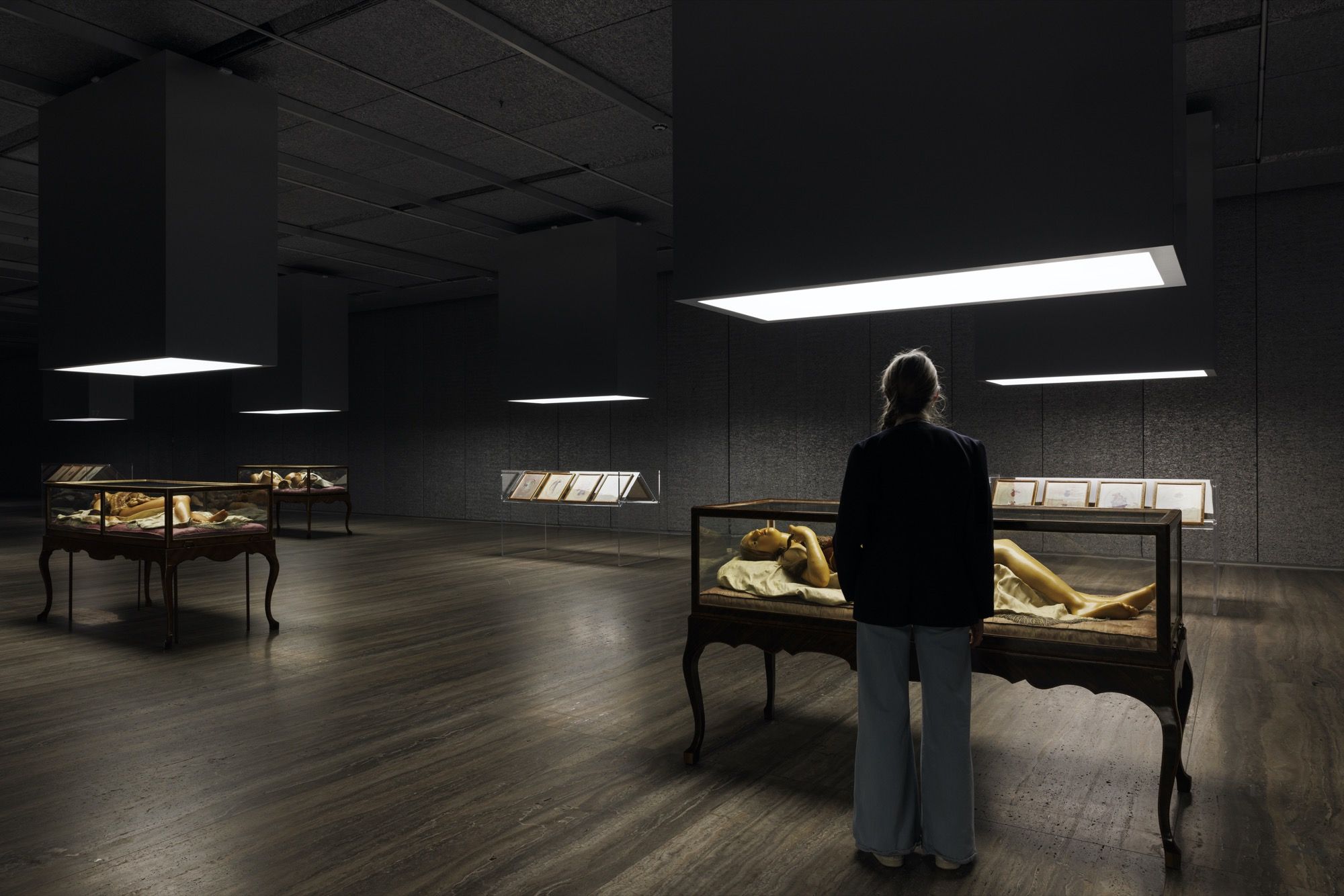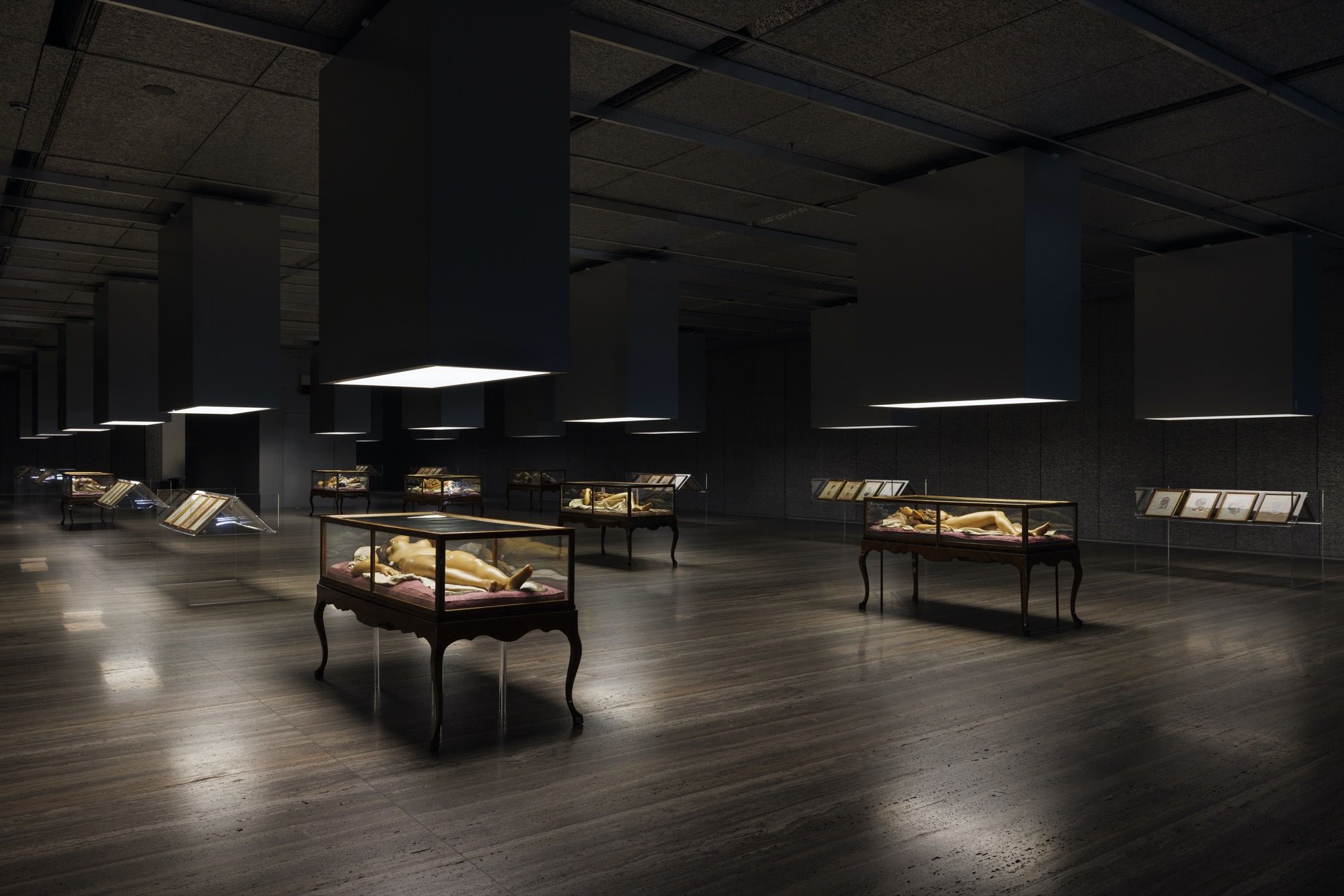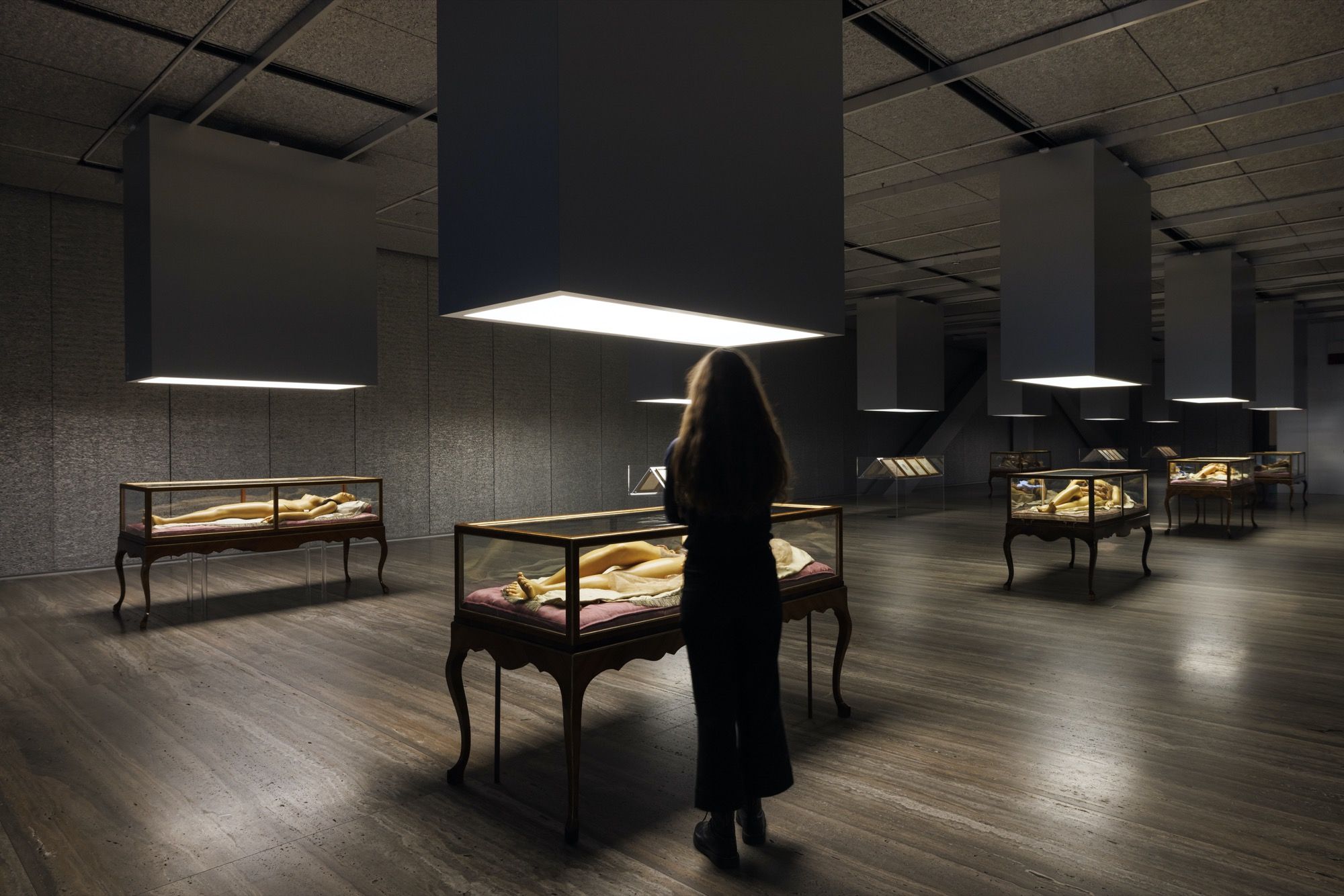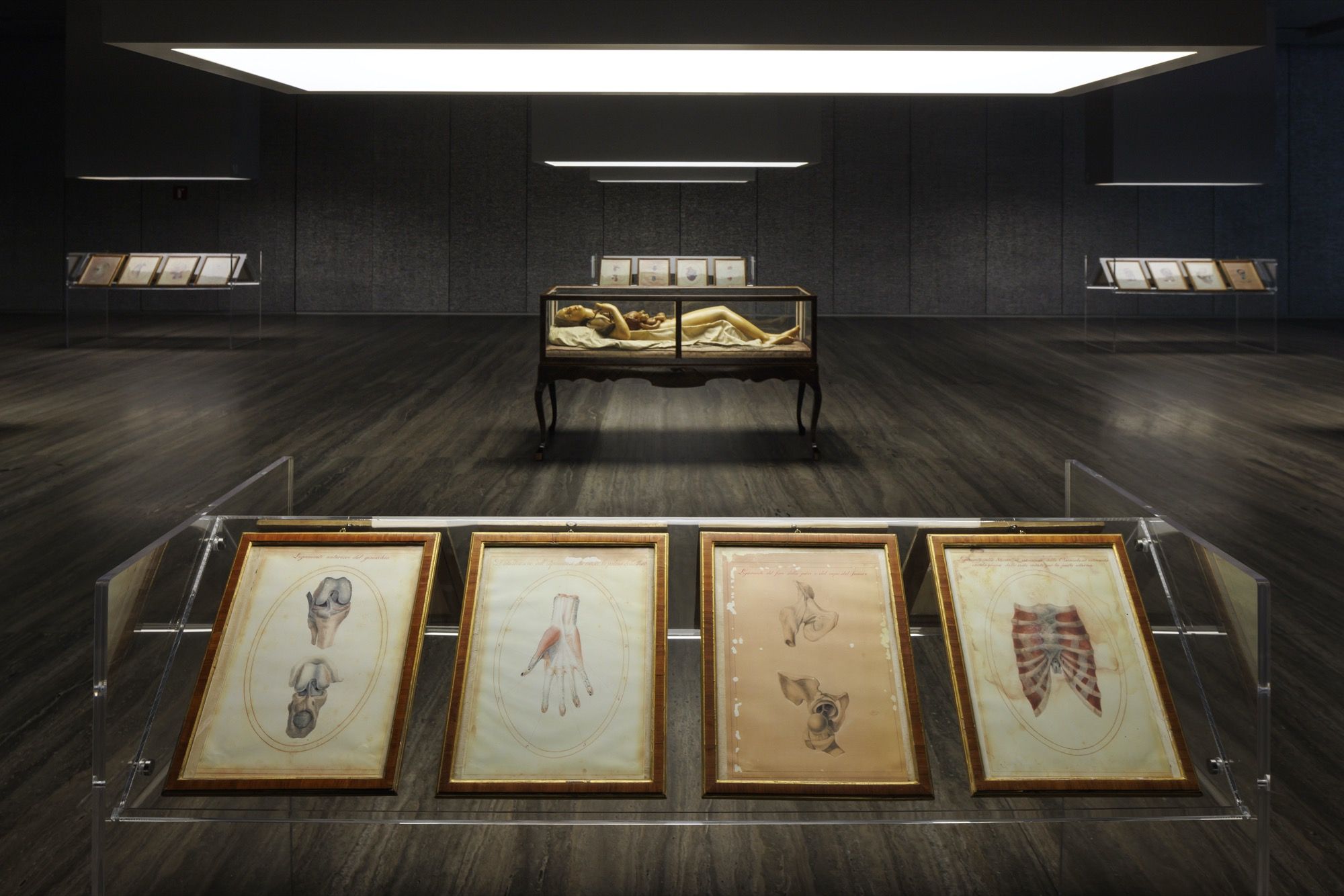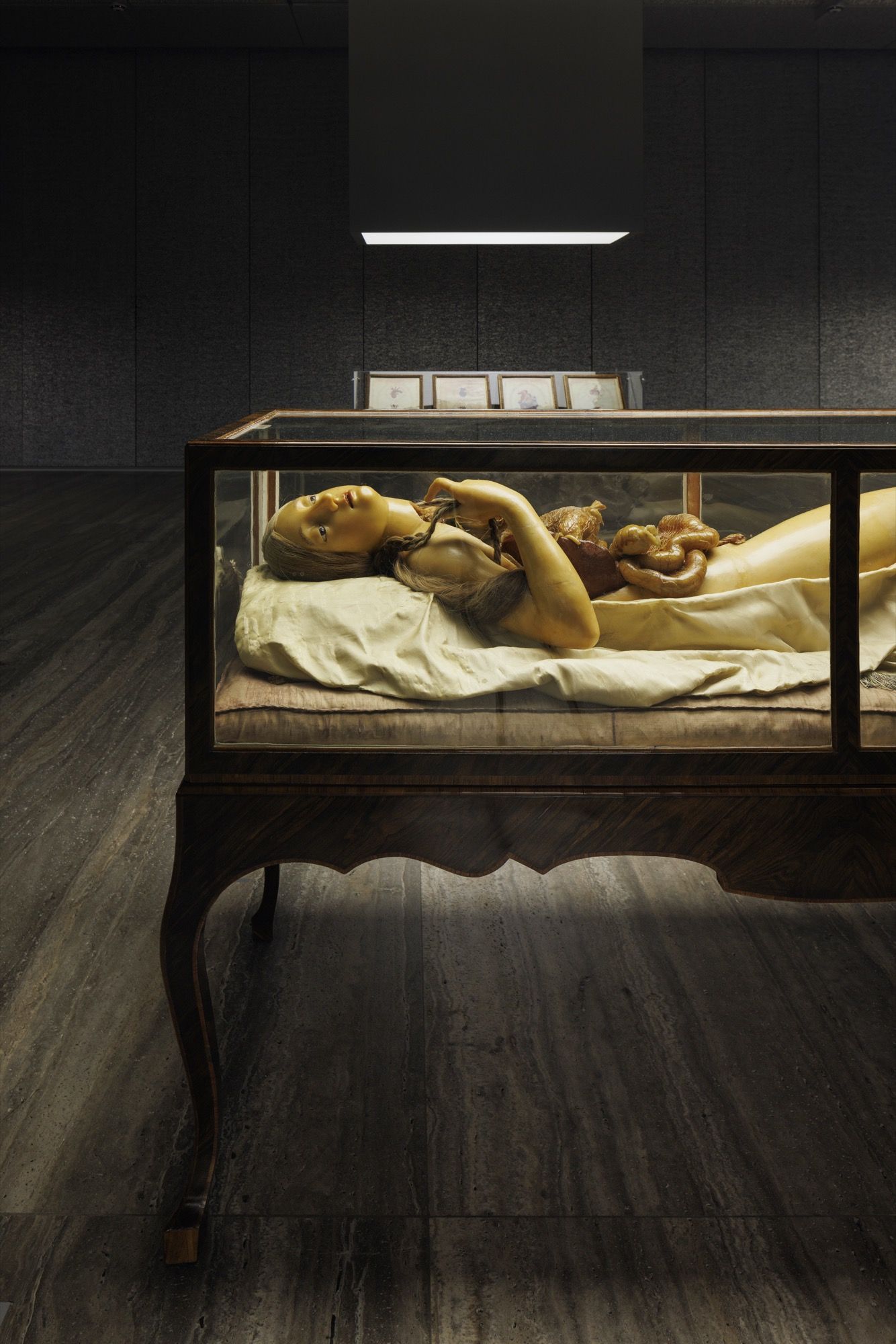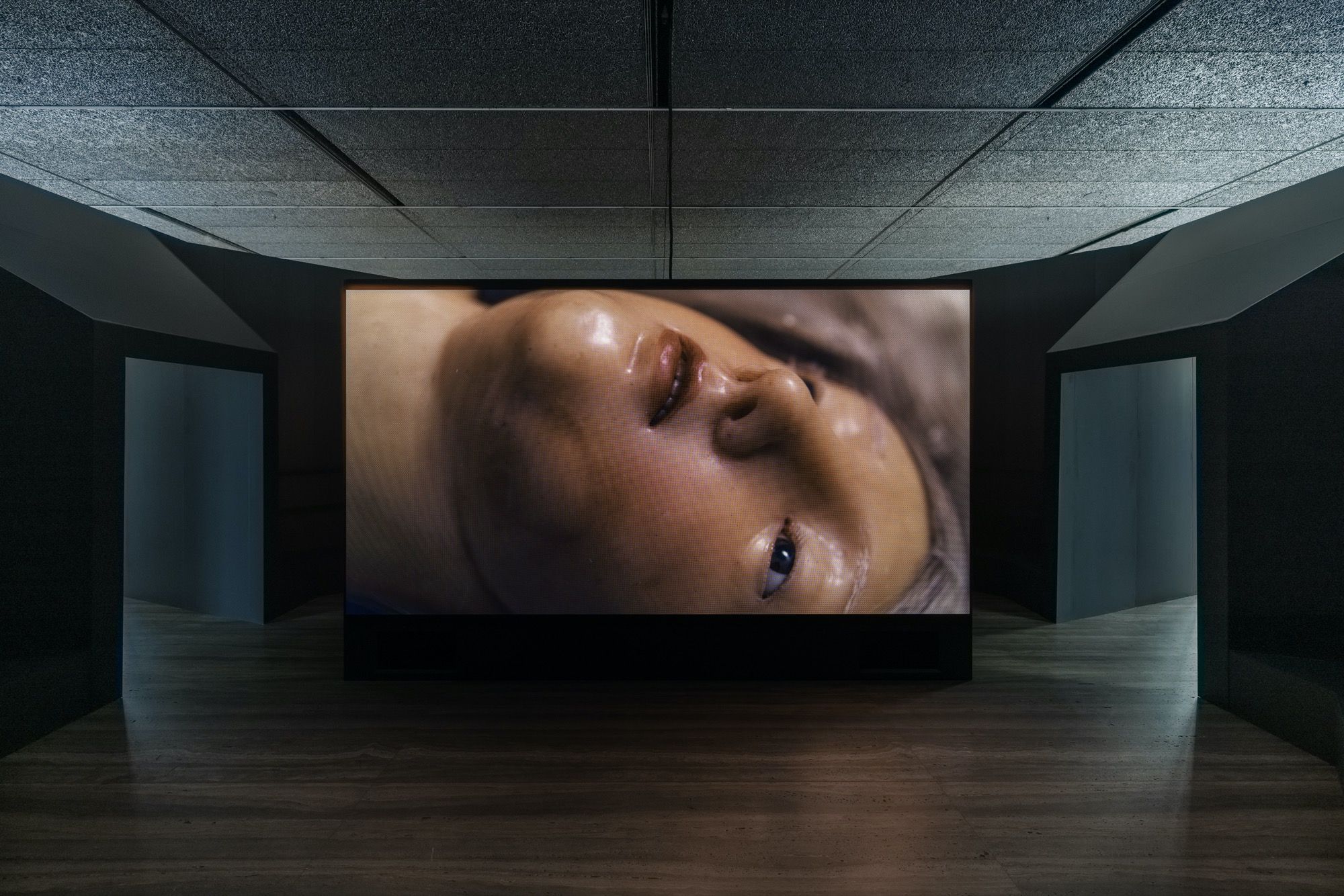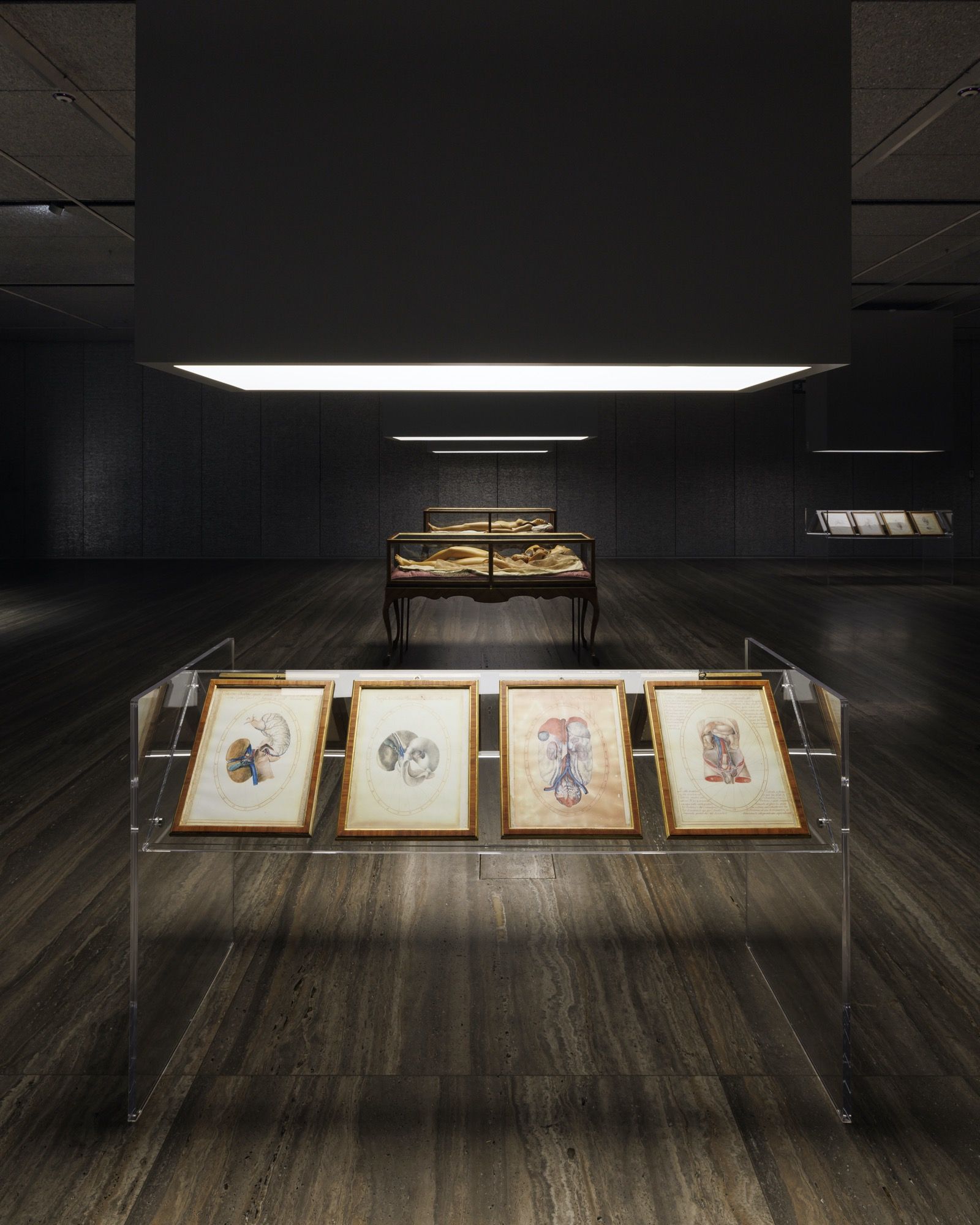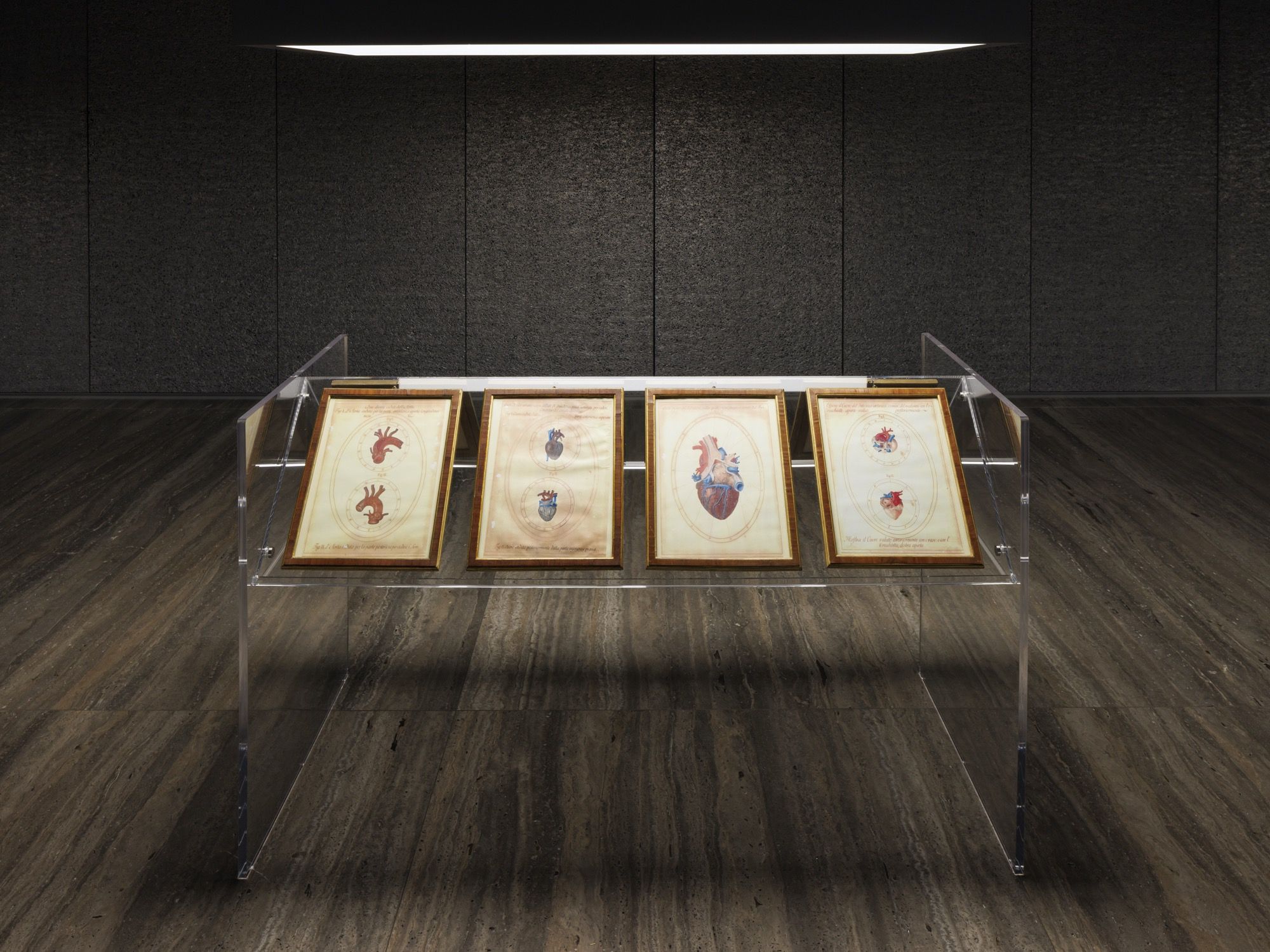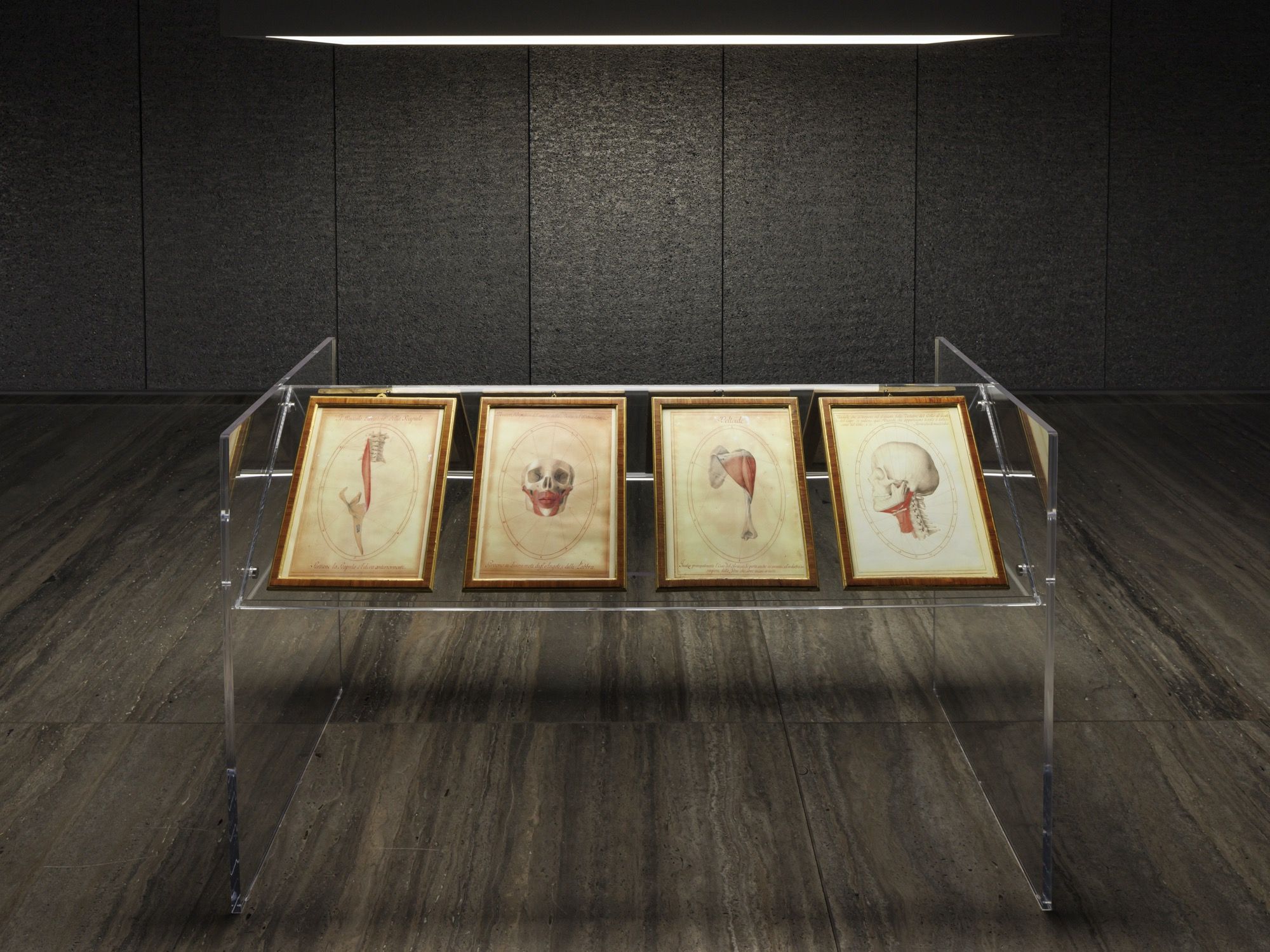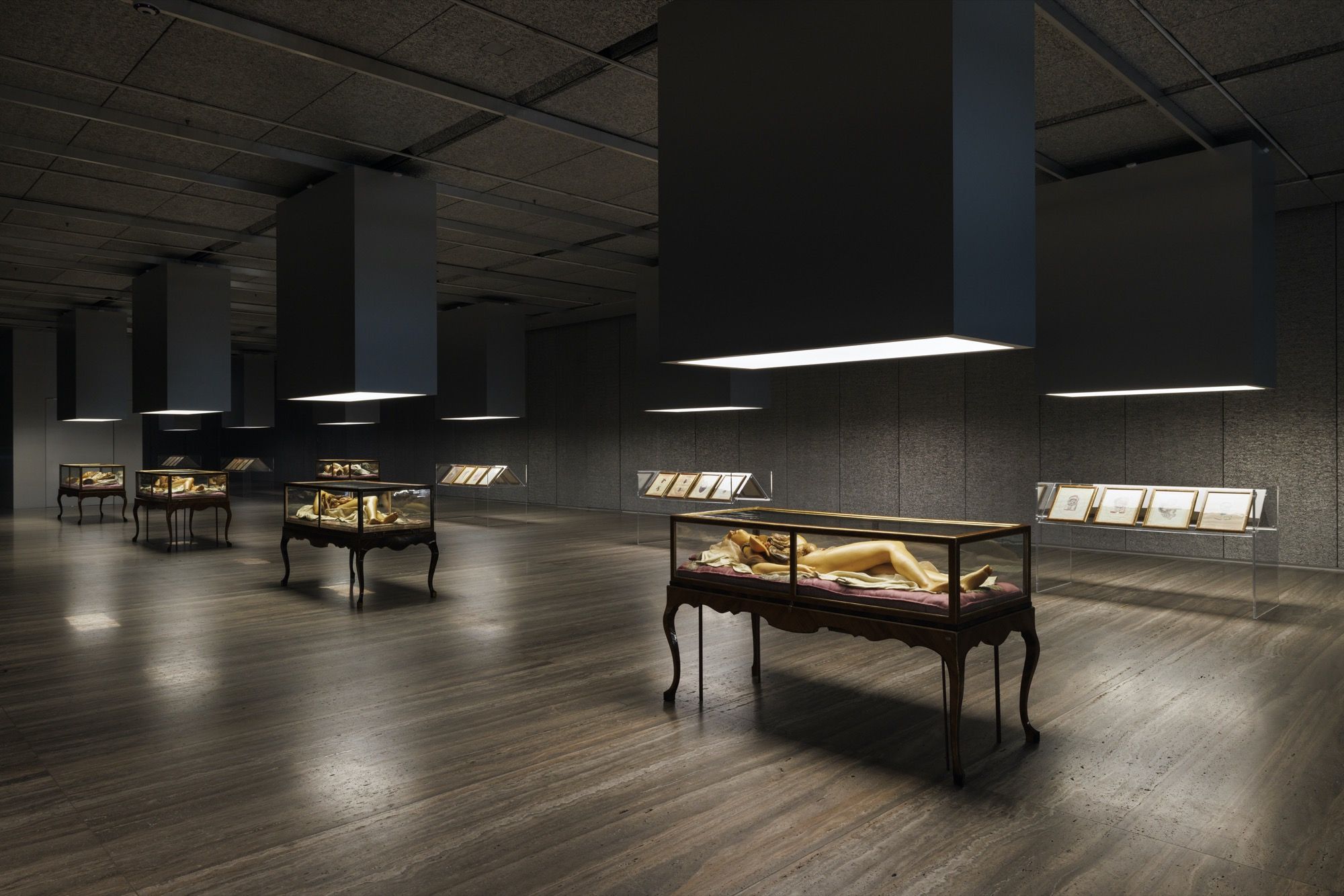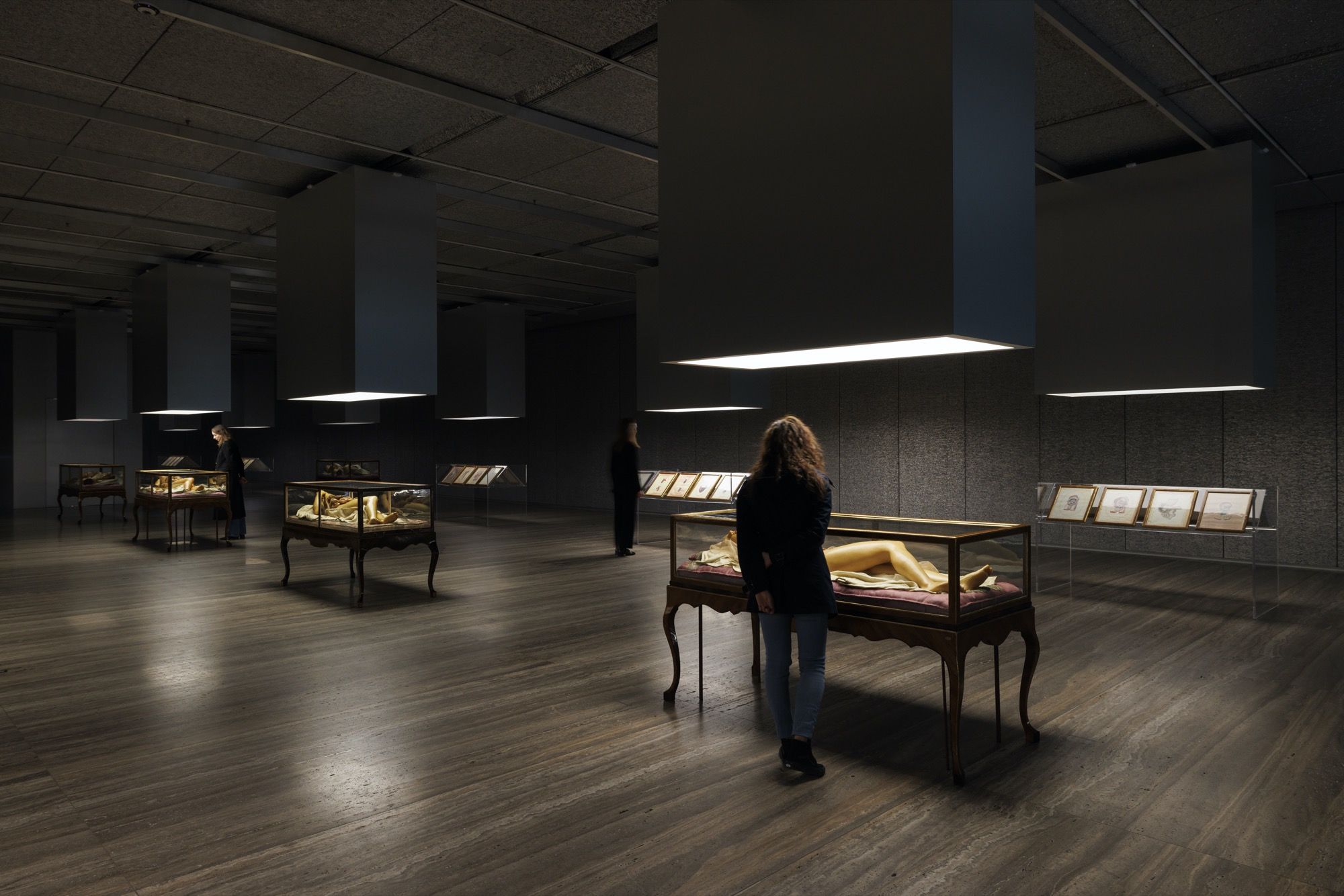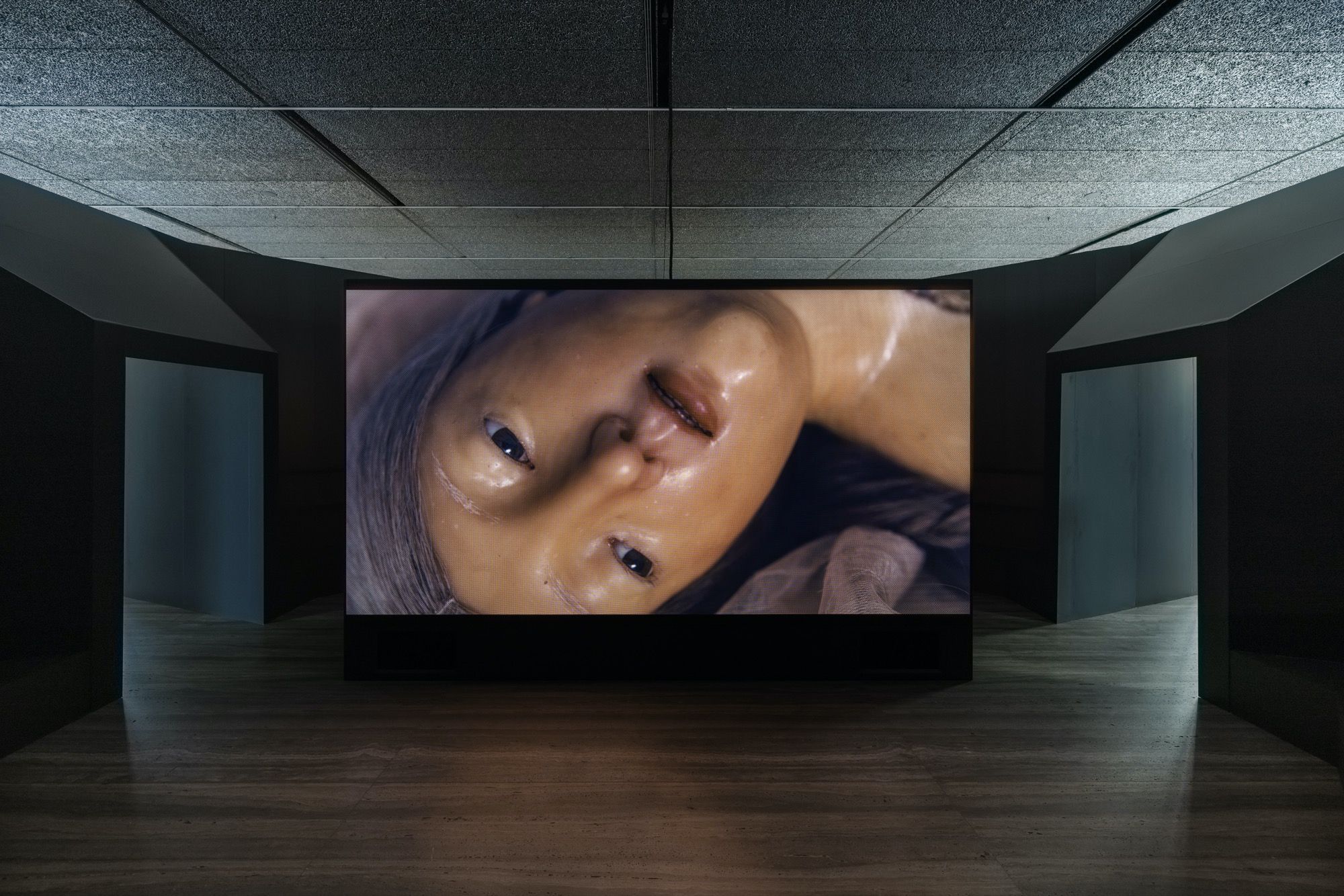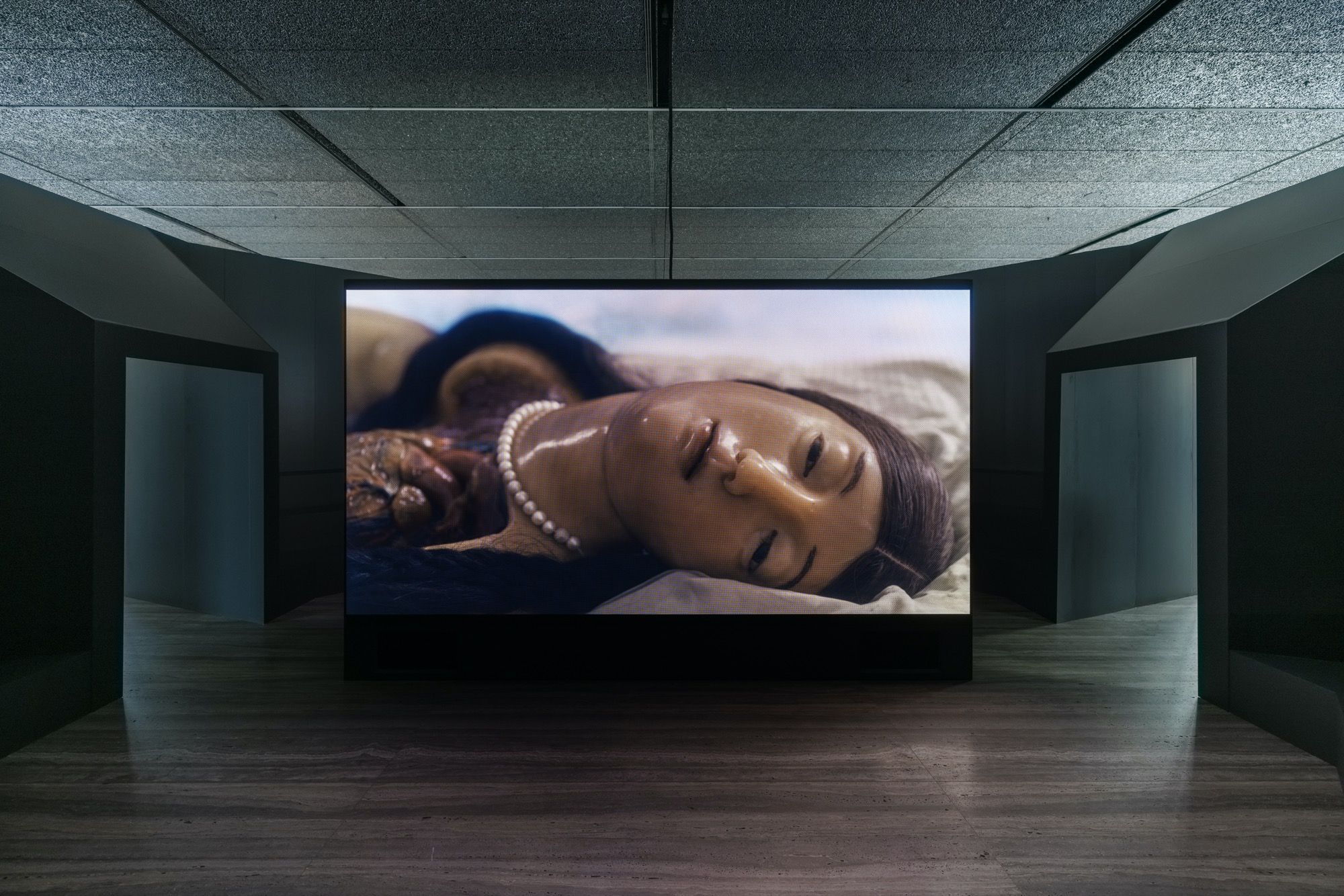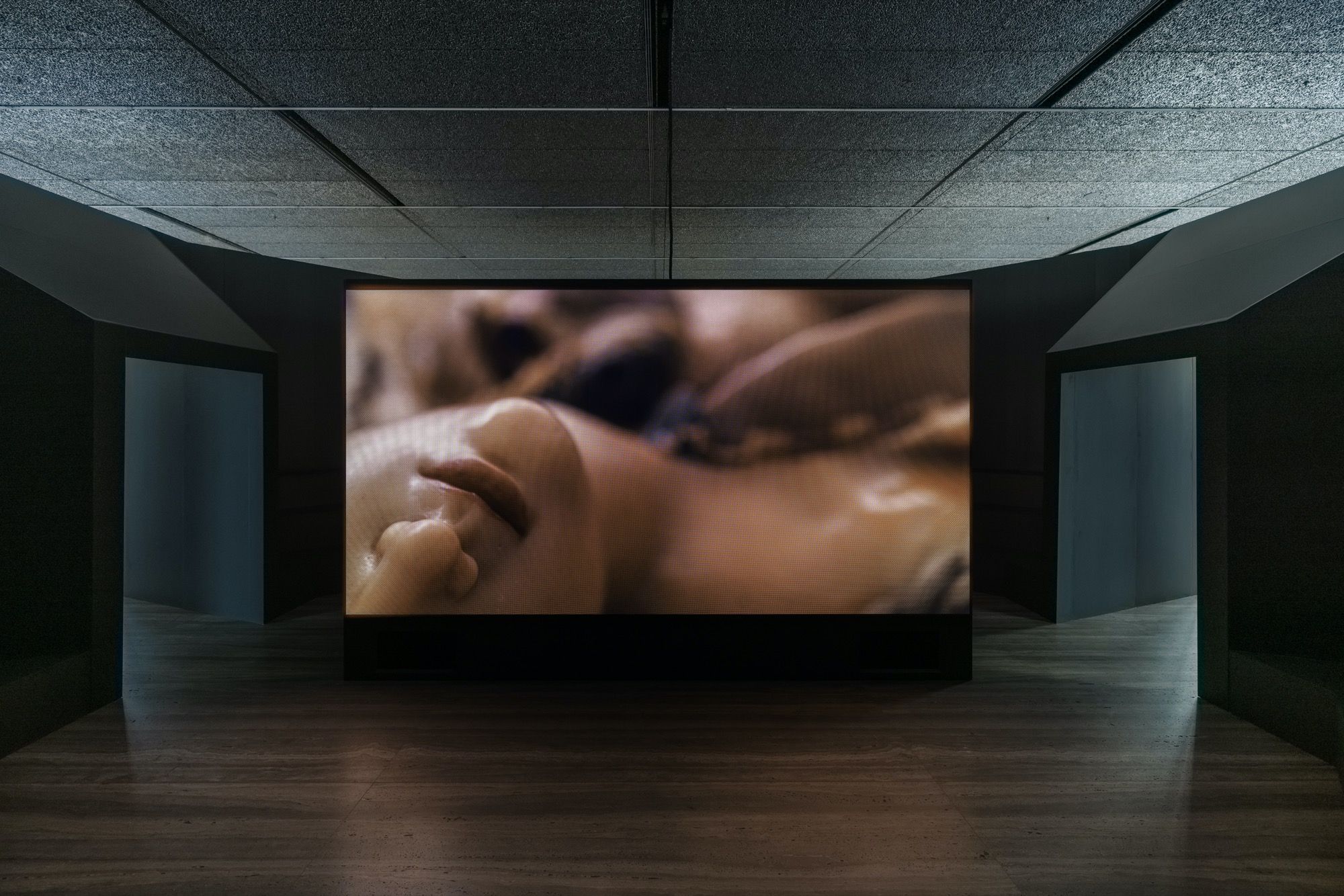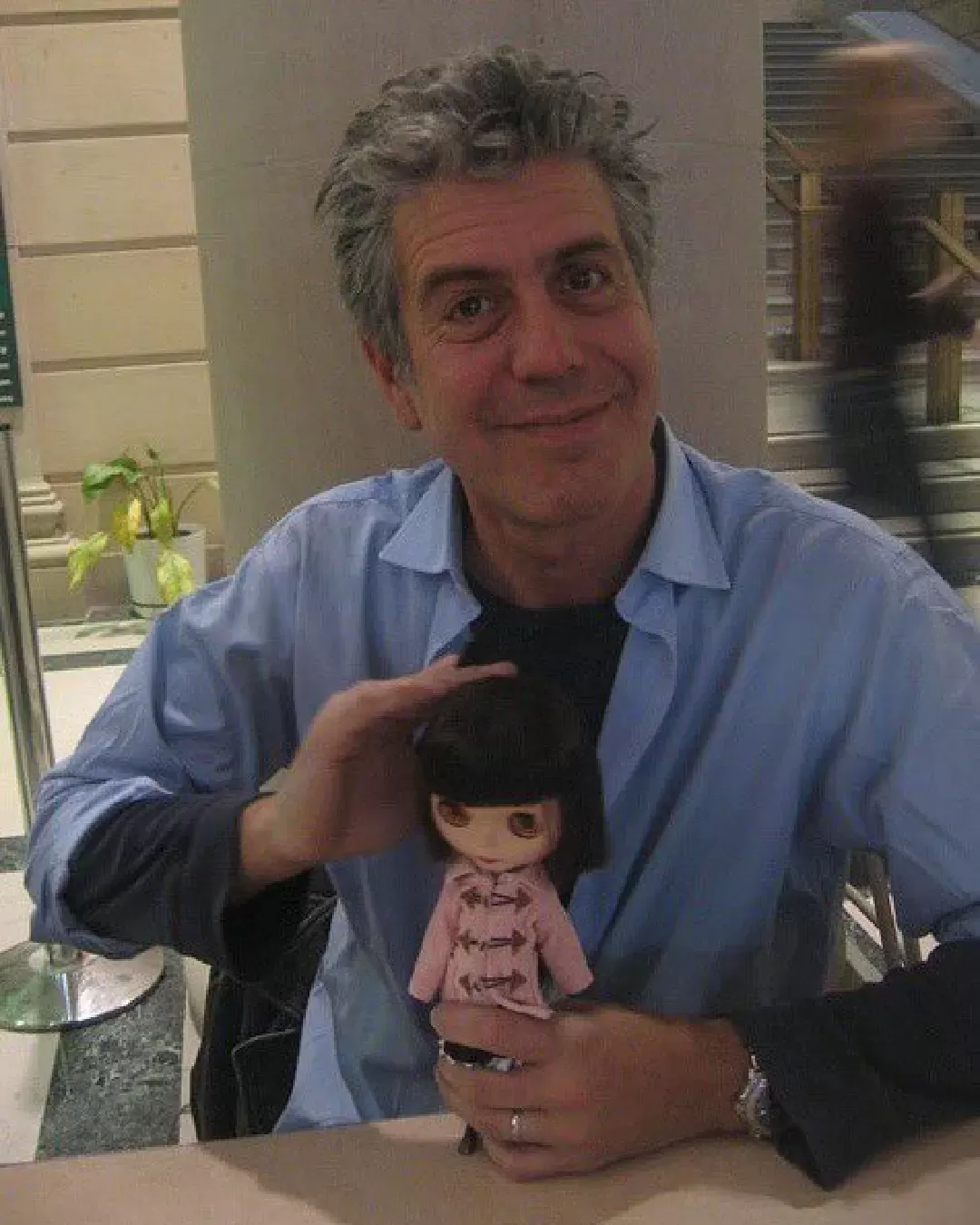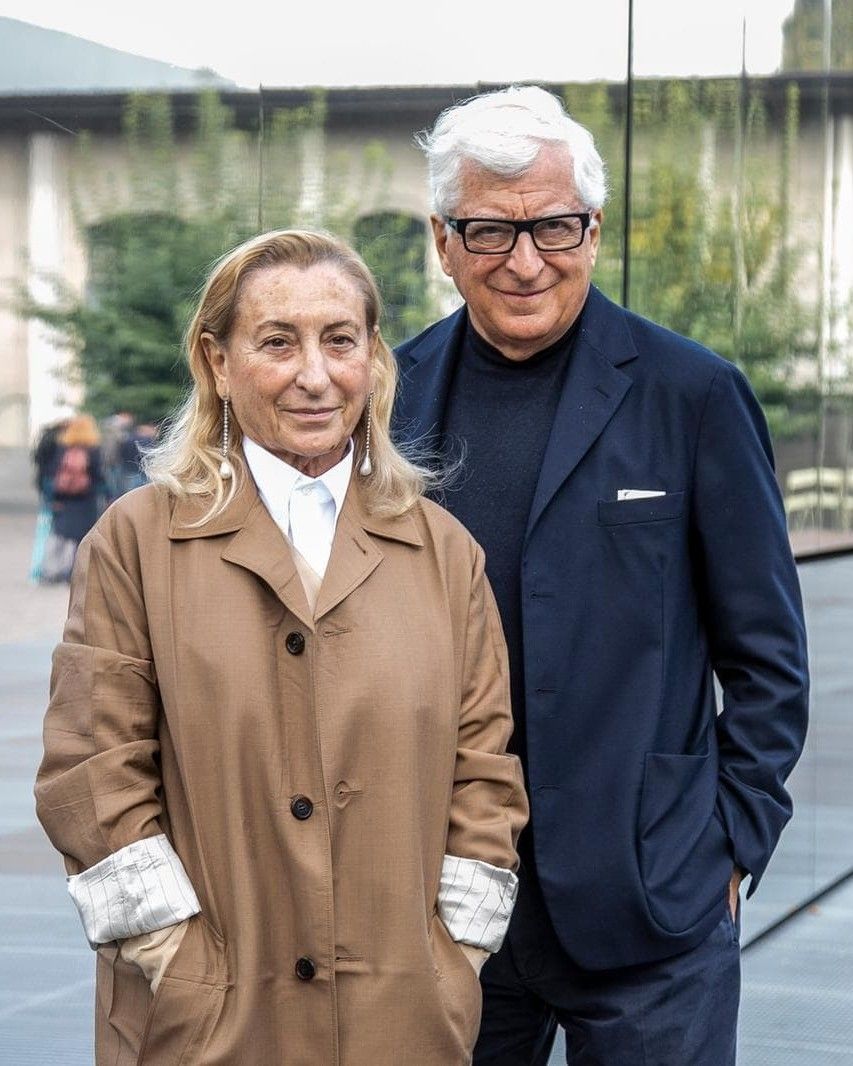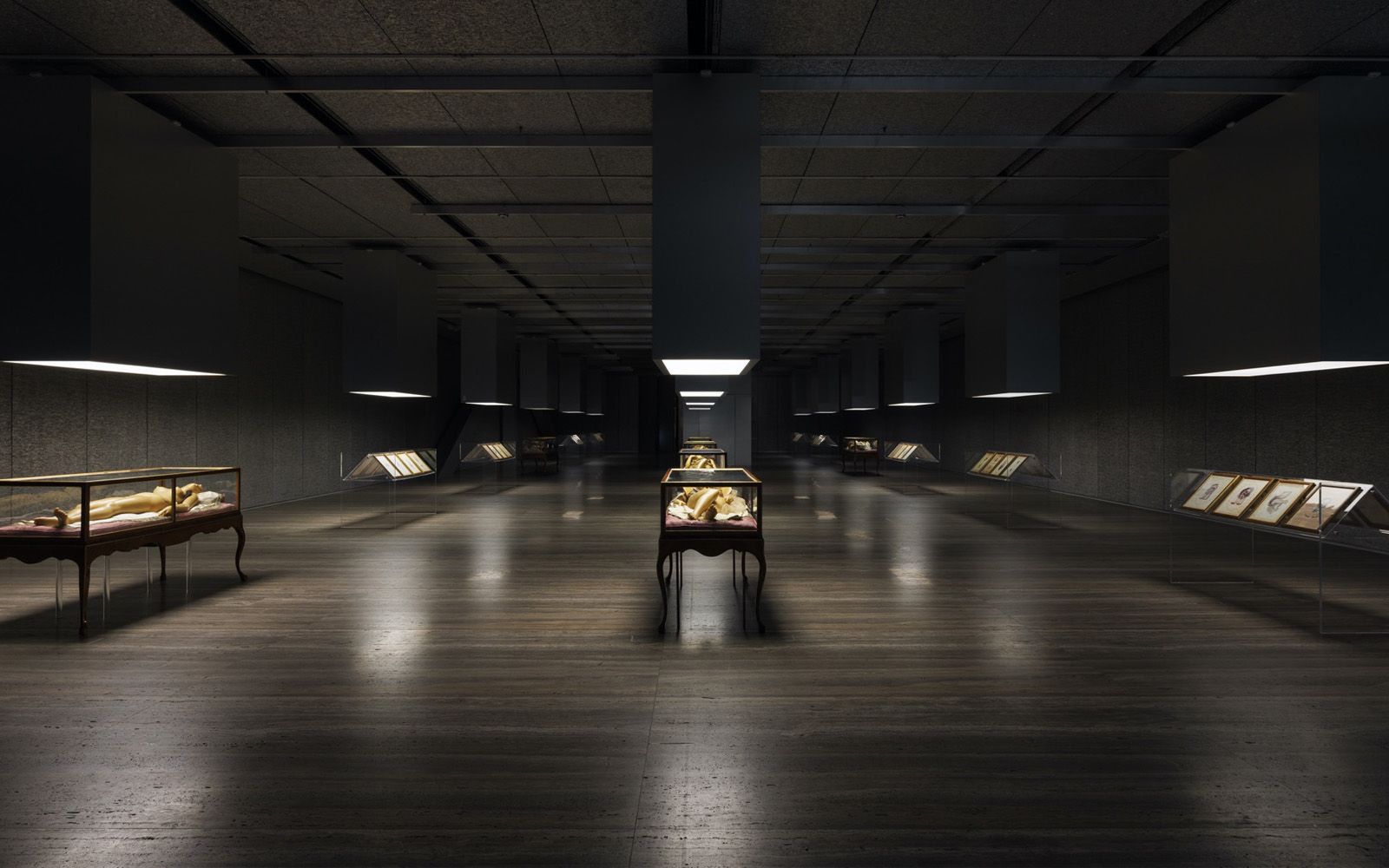
The study of the human body on display at Fondazione Prada Cere Anatomiche: La Specola di Firenze tells the story of the human body through its most faithful reproduction
Natura collecta, natura exhibita, and sometimes "natura restituta," recomposed, reconstructed, but never idealized as truth. Cere Anatomiche: La Specola di Firenze | David Cronenberg on view from March 24 to July 17, 2023, inside the exhibition casket of Fondazione Prada's Milan headquarters sheds light on our most intimate, concealed depths. An exhibition that is in itself a living image and metaphor for the act of investigating and delving, which in many cases we would more colloquially call evisceration. Although we are now far from the time of the haruspices, it is clear what star is guiding the cultural proposal of Fondazione Prada, perhaps today not far from the Enlightenment «making the vulgar happy by making them more cultured.»
Didactic intent that is inherent in the very existence of the Specola's waxes, originally created to facilitate academic study of the human body, which later became an example of the mastery of craftsmanship that has disappeared today, ceroplasty. «An operation of didactic experimentation with which we intend to tell the value of a collection and its history (...) and the contribution of creative thinking in knowledge.» This is how Miuccia Prada, underlines this ambitious project that together with the past exhibition Human Brains highlights a precise focus on the body and its motions.
Cere Anatomiche gives greater usability to the heritage, unknown to most, of the Specola, a museum opened to the public by Grand Duke Peter Leopold of Tuscany in 1775. From Goethe to Melville via Stendhal, the contents of the display cases have intrigued, surprised, and often nauseated patrons. Melville called the collection «horrible and nauseating,» baffled by the nakedness and truth of the bodies that like shiny statues decorate altars stuffed with silk and silver thread. David Cronenberg, the undisputed master of body horror, interprets the corpus consisting of the four reclining female figures, known as "Venuses," through a short film staged within a monolithic anatomical theater reenacted on the podium. In "Four unloved women, adrift on a purposeless sea, experience the ecstasy of dissection," the director enhances the eroticism evoked by the poses and expressions of the waxes, so ideally distant from the rigidity of the body displayed on the dissection table.
These rosy, coiffed figures, vulnerable in appearance and naive and dreamy in gesture, recall something that does not exist except in Gustave Moreau's visual oxymorons where dismembered bodies appear surrounded by virginal iridescent figures, and in the pornography of pain. Cronenberg celebrates their vital aspect, filming them almost in ecstasy, panting and lusting, comfortably lying in the sun in a setting, as grim as it is surreal, of seaside stillness. In the idealization of ecstasy of dissection, the echoes of the saints in martyrdom return, with their eyes to the sky and their hair composed, already far from pain and projected into the beyond, but also the grotesque and repulsive of Edward Kienholz, enriched by a cultured taste for the absurd à la Laura Betti, exemplary in her interpretation of “Solamente gli occhi”
Yet nonsense of sweet horror permeates from the highly prized display cases, intermittently lit by aseptic operating room lamps. There is something familiar, warm, and enveloping, that holds us back and invites us to search deeper to look more carefully, fearlessly at those waxen copies of copies of us, which already in Botticelli's features seem almost impossible, archetypal, and moment cease to frighten us and fascinate us like the didactic collections of seabirds and tortoises of curiosity cabinets. There is no mediation in the fruition of truth, which reveals itself raw and disconcerting and disarms us in form and volume. Anatomical Waxes guides us with invisible hands as a Socratic maieutic through the discovery of our most earthly features and reminds us how much we, despite everything, are also made of flesh.









































